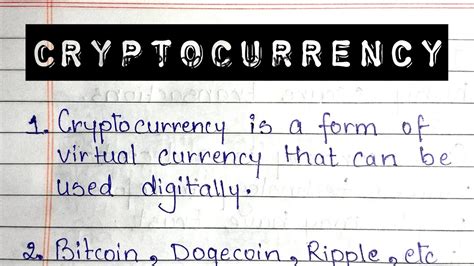Cryptocurrency: cryptocurrency hacker: learning from previous accidents
The world of cryptocurrency has experienced many hackers and uses that shake the trust of investors and users. These hacks not only caused financial losses, but also emphasized the need for better security measures to protect cryptocurrencies. In this article we will discuss some of the most important hackers in the history of cryptocurrency and which training courses can be learned from these incidents.
1. Mt Gox Hack (2014)

MT GOX, one of the largest and best -known exchange of Japan, was hacked on January 19, 2014, which led to theft of more than 850,000 bitcoins (approx. 450 million US dollars). Hack was produced by combining internal information and external attackers that used weaknesses in exchange software and hardware. MT GOX could not properly distribute its infrastructure to have widespread the company’s criticism.
2. Bitfinex hack (2015)
Bitfinex, another great exchange of cryptocurrencies, was hacked on December 18, 2015, which led to Bitcoin and other cryptocurrencies worth 10 million US dollars. Hack was carried out by an unknown attacker who used vulnerabilities in the Exchange Wallet software.
3. Coincheck Hack (2018)
Coincheck, a Japanese cryptocurrency company, which kept almost half of the global cryptocurrency reserves, including Bitcoin and Ethereum, in the amount of US dollars in the amount of US dollars, was interrupted on December 31, 2018. The attacker steel cryptocurrency worth around 530 million US dollars.
Learning to learn
Mt. Gox -Hack shows a number of main training session with which similar hacks can be removed in the future:
1
Safety test : Cyber security experts should carry out regular security inspections and distribution tests in order to identify system weak points.
2
Compliance : Companies must meet the regulatory requirements and industry standards, such as: B. those specified by the Securities and Exchange Commission (Sec).
3
User training : Users must be informed about how to save their cryptocurrencies safely and protect against phishing attacks.
- Monitoring : For exchange and containers, transactions and user activities for suspicious behavior should be continuously monitored.
Learn from other trained hacks
These hacks also underline the main training session with which similar hackers can be removed in the future:
1
chain reaction attacks : Hackers often use coordinated attacks such as phishing and repayment software to impair several goals.
- Threats from internal information : The risk of internal information, including employees or contractors with malicious intentions, are common causes for hackers.
3
Lack of regulation : The lack of regulation in some cryptocurrency markets has created an environment that is for operation.
Best Practice
To reduce the risks associated with hacking in cryptocurrency:
1
Use strong passwords and two -factor authentication : Use powerful passwords and doubtful authentication to protect your accounts.
- Cover your accounts regularly : Check your account notifications and your transaction course regularly to maintain a suspicious activity.
3
Save the software in the latest : Save the operating system, browser and wallet, which have been updated with the latest security patches.
- Be careful with phishing attacks : Pay attention to phishing E -pasts or messages that may request sensitive information.
Diploma
Cryptocurrency hacking in recent years has become a considerable concern, which has led to financial losses and endangered user data. By learning from previous hackers and following the best practice, we can reduce the risk of similar incidents in the future. For companies, exchange and users, it is important to prioritize security and take proactive measures to protect cryptocurrencies.
References:
- “Mt.

